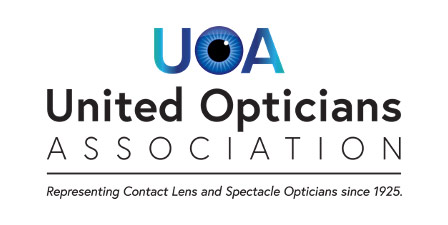By Linda Conlin, Pro to Pro Managing Editor

A new contact lens is designed to offer a non-surgical solution for patients suffering from keratoconus, corneal irregularities, photophobia, and presbyopia. On December 4, 2023, Azalea Vision, Belgium, announced it has successfully completed the first on-eye test featuring its functional, proprietary smart contact lens prototype. The ALMA Lens (Active Light Management) system is designed to offer a non-surgical solution for patients suffering from keratoconus, corneal irregularities, photophobia, and presbyopia. It will adjust the brightness of incoming light automatically and dynamically based on a user’s needs, all while functioning as a traditional lens to improve patients’ quality of life by minimizing light sensitivity and increasing visual acuity. (Glance Editorial Team (2023, Dec 10). Azalea Vision performs first on-eye test of smart contact lens. Glance by Eyes On Eyecare.
The ALMA Lens includes an embedded diaphragm, the aperture of which can be modulated to filter the amount of light that enters the eye. The design integrates liquid-crystal technology, a microchip, an RF (radio frequency) antenna, a medical grade micro-battery, and a configurable light control. This smart lens is designed to be easy to use and program by patients and physicians, allowing for personalized therapy and enhanced visual acuity. The ALMA Lens was successfully placed on the left eye of Azalea Chief Technology Officer and Co-Founder Andrés Vásquez Quintero, also the prototype’s inventor. Said Vásquez Quintero, “It works.”
The company reported it will next test the lens on patients with irregular astigmatism due to keratoconus and other corneal irregularities. The intent is to ensure that the lens correctly filters out peripheral light in order to “allow only focused light to reach the retina,” the company stated. For presbyopes, the ALMA’s diaphragm creates a small aperture to enhance depth of focus and enable greater clarity in a user’s near vision. For photophobia, ALMA dynamically adjusts the aperture to varying light conditions for more visual comfort in different lighting environments. And in cases of aniridia or coloboma (a defect in the iris giving the pupil an irregular shape), ALMA acts as a functional iris to regulate light and focus. Azalea believes the technology could also aid patients with iris disorders, and severe light sensitivity due to chronic migraine or dry eye syndrome.
New developments are expanding the function of contact lenses beyond vision correction to noninvasive devices that monitor eye and systemic health and provide therapeutic functions such as drug delivery and light control, that are convenient and wearable. It’s exciting to wonder what will come next!












